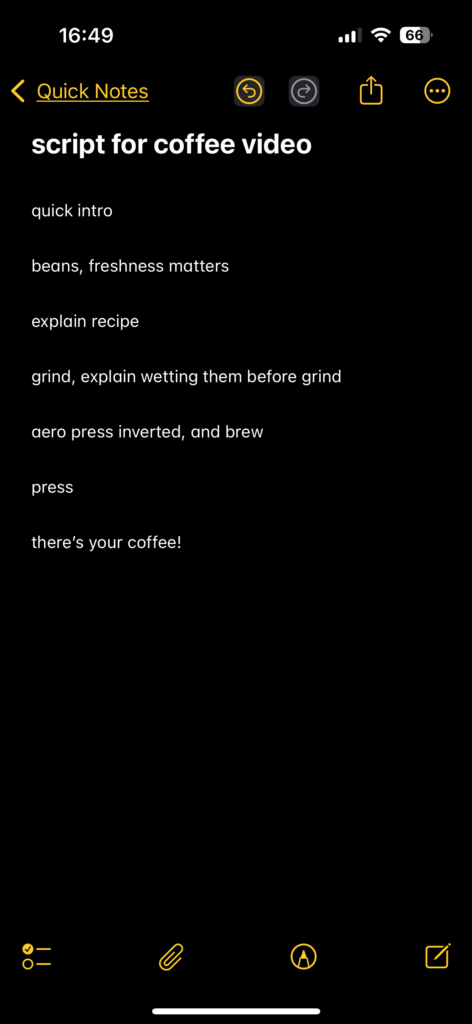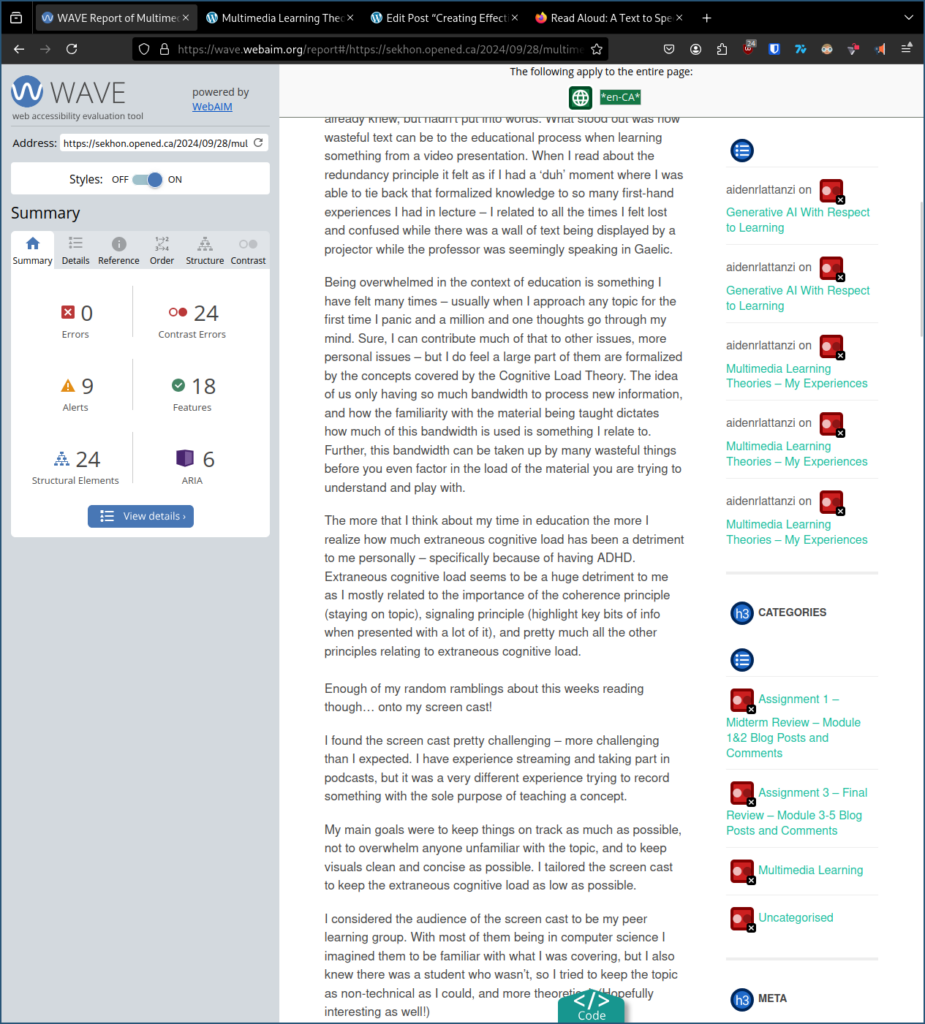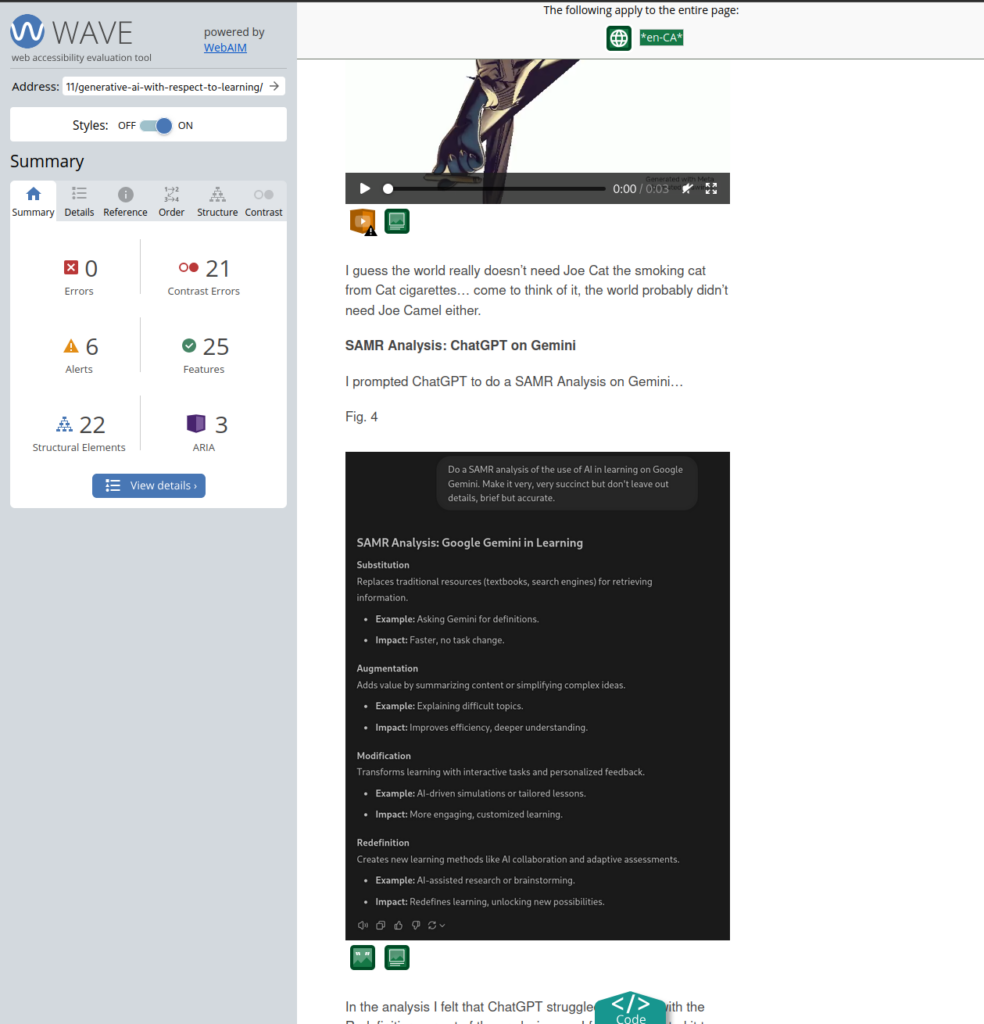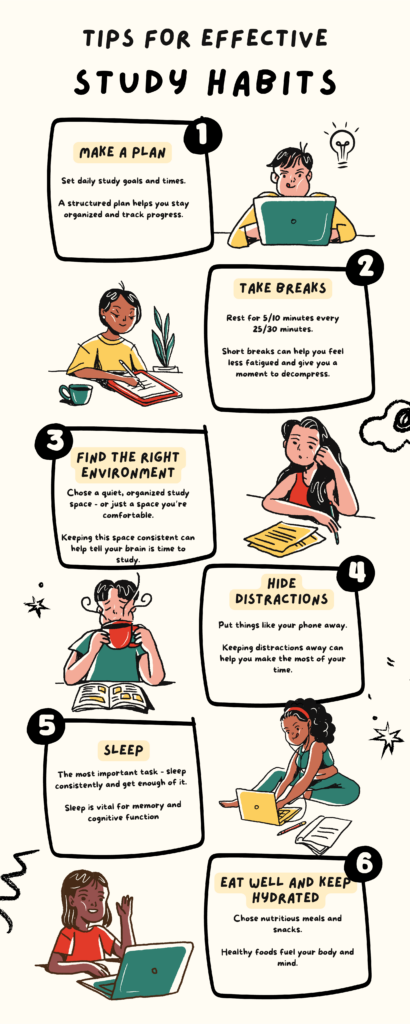The importance of storytelling in the context of learning was never lost on me, and this week we explored the topic of how important it really is. We explored what can go into producing something with effective storytelling techniques being deployed. I made my own twine to try my hand at story telling, and I even made my own educational video where I showed how to make coffee.
My Papa’s Waltz
I alluded to knowing the importance of storytelling in the context of education, and My Papa’s Waltz by Theodore Reothke is a poem that I read in school many years ago that distinctly taught me this lesson. The vivid imagery and layered emotions of the poem invites the readers in to interpret things how they see fit, and also empathize with the narrator. Stories in general, when they are joyful or bittersweet, can foster critical thinking at a higher level due the potential reliability and captivity they can allow. Because of the personal connections I made with this poem, I can still remember and call back to the lessons I learned in English class so many moons ago. I can remember unlocking the ability to connect with poetry and extract more from written prose due the storytelling ability on its own. Storytelling can allow the deeper and critical thinking level of education feel unlocked without there being a barrier to entry of a certain amount of effort required.
My Twine Story
We were tasked to make a twine story this week – so I chose to make personal. It is a bit of your choose your own adventure style game, but it all leads back to the same point.
I chose to make it personal as our readings from this week stressed how much more a story can flow when it comes from a personal place. It can allow the reader to connect to the emotions and sensations you felt as you wrote it/created it.
Before you click on the link and play it, I do want to advise you that it is dark and deals with the topic of mental health. I tried to make it mild as we are in an educational environment – so nothing is graphic or too intense, but it is still a tough subject for some so I thought it would be best I mentioned it beforehand. If that is something you are not comfortable reading about/playing through then please do not click the link.
TRIGGER WARNING: DEALS WITH DEPRESSION – A Student in November
I think the format of branched storytelling allowed me to give readers the experience of free will, whilst also showing them the depression itself can something that follows you regardless of the decisions you may make within the day. I think it allowed me the ability to showcase the pervasive and inescapable nature of depression in that it can drown you even in moments that you should find joyful.
Coffee: My Way
For my educational video I wanted to keep to a format that felt authentic to me – a vibe that I would describe as being a chill guy. I felt my main inspiration was J Kenji Lopez Alt – so I chose to make my video very free flowing.
I decided that I would make a video based around food or drinks, and eventually narrowed the topic down on drinks as it felt like it fit the scope of the assignment well. Naturally, the next question was what drink, and I arrived to coffee being the drink of choice quite quickly. I used to be more into the process of crafting a cup of coffee, but I was still up to date enough with my knowledge on the world of coffee enough, but I wasnt too obsessive about it. I felt alcoholic drinks, or chai would have been too simple to make.
I quickly drew up a storyboard:

Then I made my script:

And then I shot the video:
In my video I focused on keeping a conversational tone, keeping on the topic at hand as much as possible, and tried to explain the decisions that can go into adjusting the recipe for someones taste. I think these things together can help someone take away as much as possible from the video as it can be something plays and watches if they are interested in making an aeropress brew, and then it could be something they watch alongside while they make the brew themselves. They could pause the video during their brew to make decisions based on the guidelines I give in the video… for example if they have a darker brew they might choose to brew at a lower temp than the one I used myself.
I think a different approach to this video could give results equally as effective – it would just be a video made with a different purpose. If I ‘TikTok’ified this content and made it short form with a lot of edits and cuts, I would be going more into the realm of quickly giving people the information they need in a multimedia format. It would help with keeping the learners engaged and sticking to the facts, but I think it would take away from making it memorable. I think the longer format I used in this video appeals to why people get into making coffee in the first place, it can be a relaxing and therapeutic experience almost.
Figure 1:

Figure 1 – Just a chill guy brewing some coffee. (Created by Phillip Bankss on bluesky)











Recent Comments